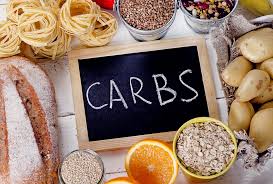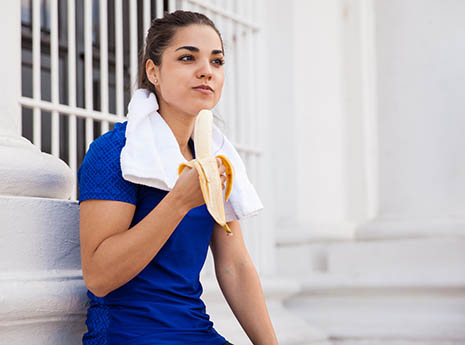Running a marathon requires the use of both oxygen and glucose in order to create energy your muscles can use to move you 26.2 miles. This occurs through a process called aerobic cellular respiration. When you are a diabetic, your body struggles both with getting glucose out of the blood stream, and in getting it into the cells where it can be used to create energy.
When running a marathon with diabetes, the primary concern is hypoglycemia or low blood sugar, as the cells are not only unable to get the glucose they need to create energy, but the inability of the body to replenish blood glucose levels quickly enough can cause a serious medical emergency. In this article I outline 5 key concepts that you can use as a diabetic in order to both train for and experience an incredible marathon run.
Before I dive into those concepts, however, a step back. Each of us have challenges that we face on a daily basis, be they mental or physical. We have a choice to either allow those challenges to define us, or to strengthen us and build a mental foundation that can overcome all things.
During my running journey as a diabetic I have decided that I am not a diabetic runner, but a runner who happens to have diabetes and the choice of how I’ve decided to define my challenge has dramatically altered my journey for the better. If you know who you are, and you believe in what you can become, then you owe it to yourself to go out and take what belongs to you regardless of the circumstances you are in or the challenges you face.
People will doubt you, and they will try to limit you but whether it’s diabetes or anything else that you face you ultimately have a choice as to whether or not you listen. Always know who you are and believe in what you are capable of.
There are obviously many things that go into running with diabetes, but what I have selected are 5 simple things that you can do which will certainly help improve the likelihood of having a successful marathon.
Improve your running economy

Running economy is essentially a measurement of how efficient your body is at creating energy while running at a specific pace. The more efficiently your body can convert oxygen and glucose into energy, the less of it is required, and the less likely you become to experience low blood sugar during your run.
You improve running economy by increasing your aerobic capacity, and one of the primary ways to accomplish this is by running slower for longer. While higher intensity runs help improve VO2 Max, which is a measure of your body’s ability to take in oxygen, lower intensity longer runs help increase the ability of the body to use that oxygen which is much more important over the course of a 26.2 mile race. Heart rate training is both an easy and effective way to measure the intensity of a run.
A typical approach defines a set of 5 different zones, each of which represents runs of varying intensity. In order to improve aerobic capacity, the focus needs to be on keeping the heart rate in Zone 2 as much as possible. A common approach to training, called the 80/20 approach, says that 80% of your weekly mileage should be done in this aerobic zone.
For a diabetic this is the primary tool for not only running a successful marathon, but training for one as well. Remember that as a diabetic, we don’t suffer from the ability to use oxygen, but glucose and therefore addressing economy over VO2 Max & speed work will dramatically improve your chances of success on race day.
Eat Complex Carbohydrates

Eating enough of the right foods at the right time is critical for every runner, but even more so for diabetics since either converting those carbohydrates to energy or storing them can become harder.
Complex carbohydrates, which are more difficult for your body to breakdown, can supply your body with a more stable source of energy and help avoid low blood sugar levels during a run. Whole grains, oats, vegetables, and foods low on the glycemic index are sensible choices.
Planning your meals out ahead of time to ensure that you are taking in enough to fuel not only the current run, but also future runs is also a very valuable tool and can help ensure your glycogen stores are always full and your body is able to use that instead of relying on converting in-race fuel into energy.
Use a flexible approach to training

There are days where, as a diabetic, your body is simply not going to cooperate with you. Your aerobic fitness may be exceptional, your VO2 Max might be sky high, but it’s just not always that simple. You need to choose a training plan that is flexible and provides you with the ability to move or alter runs depending on what you are physically capable of on a given day.
While I am a firm believer in developing mental strength to overcome and redefine self-imposed physical limitations, running through low blood sugar or on days where diabetes is causing you other physical problems is not only not recommended, but a sure way to end up in serious medical trouble during a run. Know your body, listen for warning signs, and understand when you need to adjust your plan.
In-run fuel is critical

When other people run out of fuel they “hit the wall” and simply can’t run any further. As a diabetic, when you run out of fuel the result can be far worse, and so the goal becomes preventing that at all costs. In addition to eating well leading up to the race, you need to establish and practice an effective strategy for fueling your marathon.
Gels, beans, and other products all work well for this and it becomes less about what works in general as what works for you. Practice what you plan on using during your marathon every chance you get, and don’t be afraid to try new approaches to figure out what works best for regulating your blood sugar levels during runs.
Don’t quit

There are days where trying to run with diabetes will be the most frustrating thing you’ll have ever imagined. Not only do you have to deal with the typical ups and downs that occur during a training cycle, but you have the added mental and physical toll that come with trying to manage your blood sugar effectively on top of that.
Work on developing a mental strength and determination that allow you to believe in yourself and your goals even when all the odds seem stacked against you. Learning how to not only persevere but succeed in the face of seemingly insurmountable odds is what makes a good runner a great runner, and will help reach the marathon goals you’ve set for yourself.
